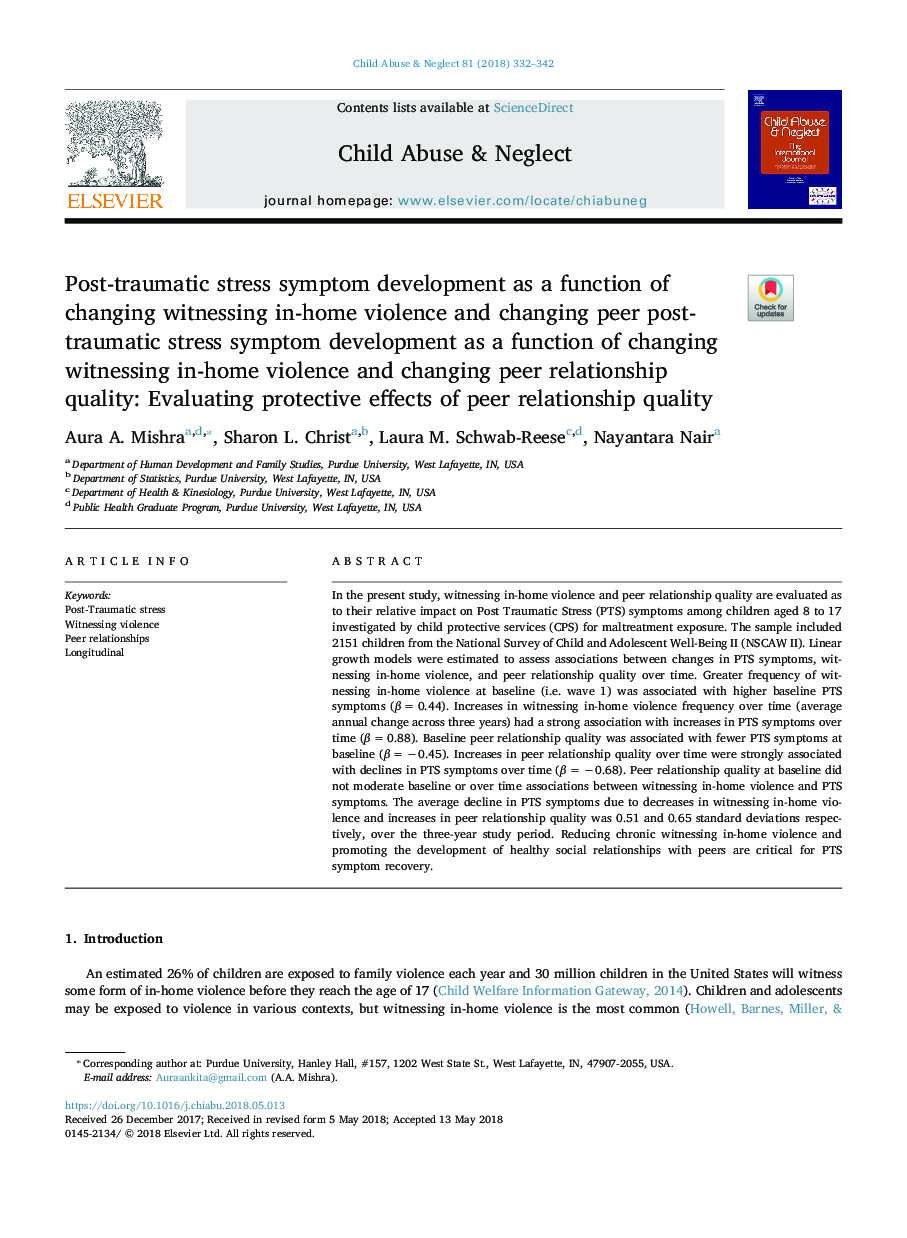| Article ID | Journal | Published Year | Pages | File Type |
|---|---|---|---|---|
| 6831886 | Child Abuse & Neglect | 2018 | 11 Pages |
Abstract
In the present study, witnessing in-home violence and peer relationship quality are evaluated as to their relative impact on Post Traumatic Stress (PTS) symptoms among children aged 8 to 17 investigated by child protective services (CPS) for maltreatment exposure. The sample included 2151 children from the National Survey of Child and Adolescent Well-Being II (NSCAW II). Linear growth models were estimated to assess associations between changes in PTS symptoms, witnessing in-home violence, and peer relationship quality over time. Greater frequency of witnessing in-home violence at baseline (i.e. wave 1) was associated with higher baseline PTS symptoms (βâ¯=â¯0.44). Increases in witnessing in-home violence frequency over time (average annual change across three years) had a strong association with increases in PTS symptoms over time (βâ¯=â¯0.88). Baseline peer relationship quality was associated with fewer PTS symptoms at baseline (βâ¯=â¯â0.45). Increases in peer relationship quality over time were strongly associated with declines in PTS symptoms over time (βâ¯=â¯â0.68). Peer relationship quality at baseline did not moderate baseline or over time associations between witnessing in-home violence and PTS symptoms. The average decline in PTS symptoms due to decreases in witnessing in-home violence and increases in peer relationship quality was 0.51 and 0.65 standard deviations respectively, over the three-year study period. Reducing chronic witnessing in-home violence and promoting the development of healthy social relationships with peers are critical for PTS symptom recovery.
Related Topics
Health Sciences
Medicine and Dentistry
Perinatology, Pediatrics and Child Health
Authors
Aura A. Mishra, Sharon L. Christ, Laura M. Schwab-Reese, Nayantara Nair,
